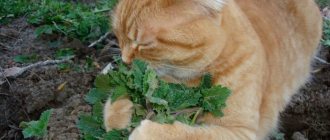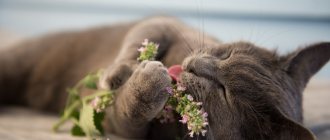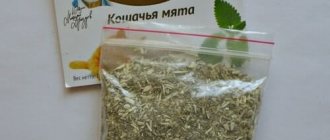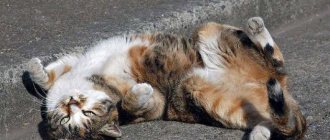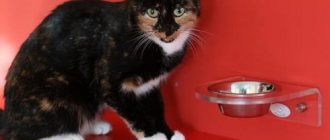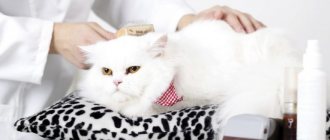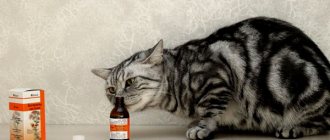What is catnip
Catnip is a species of plant from the Lamiaceae family. Its main features are a strong aroma and high menthol content.
Characteristics and naming options
Catnip is easily identified by its heart-shaped leaves, lilac flowers, and aromatic lemon scent. It is widespread in Russia, Europe and Asia, and is also found in India, Nepal and Pakistan.
An alternative name for the plant is catnip. Its extraordinary popularity among cats is explained by its high content of essential oils, which emit an attractive aroma for them.
Varieties
Catnip is mainly used in the pet industry, but it can also be found in the food industry and in the production of medicines, perfumes and cosmetics. The plant is unpretentious in care, so it is easy to grow at home on a regular windowsill. The most important thing is not to confuse catnip with its closest relatives. In addition to it, the following varieties are often found in Russia:
- aquatic - a wild species that grows near rivers and streams;
- fragrant, often used by gardeners to decorate rock gardens;
- pepper, obtained by hybridization of aquatic and fragrant;
- field, characterized by the weakest aroma and the absence of a specific cooling taste.
It is also worth noting 2 more varieties of pepper: chocolate and menthol. The first has a pleasant chocolate aroma and is widely used in cooking, and the second contains the largest amount of menthol and is very popular in pharmacology (Golden Star ointment and Doctor MOM cough syrup).
Can cats have catnip?
Some owners doubt whether it is possible to give cats catnip, since its effect is very similar to a narcotic. In fact, there is no dependence on this plant, and with frequent use, it completely ceases to attract the pet.
Benefit
Ingesting catnip is not necessary. The effect is achieved even when sniffing it and fades away quite quickly, therefore, in the absence of contraindications, it can be freely used to achieve the following goals:
- behavior correction;
- stress relief;
- increased appetite;
- improving the digestion process during stomach pain and cramps;
- training (used as a reward);
- prevention of helminthiasis.
The benefits of catnip for cats are undeniable, which is why it is often added to food and toys. It can also be easily grown at home.
Harm and contraindications
Catnip does not have a negative effect on the central nervous system and gastrointestinal tract, but still has some contraindications. These include:
- Pregnancy. Severe overexcitation when carrying kittens is fraught with premature birth and miscarriages.
- Hypersensitivity to the main components. An overreaction to catnip can lead to exhaustion of the nervous system.
If your pet behaves too violently or apathetically when using the plant, then it is better to avoid using it. In this situation, you should not wait until you get used to it, as this can harm your pet.
Veterinarian advice
Since pheromones, sprayed at the right time and in the right place, significantly improve the cat’s emotional status and are able to correct the animal’s unacceptable behavior, veterinarians advise trying the effects of catnip to resolve problematic situations. One should not expect unequivocally positive results from the influence of catnip, since its effect is individual in nature. And, of course, for visits to veterinarians to minimize the stress of the animal, veterinarians can also recommend this remedy!
Flehmen is the name given to a cat's grimace when it perceives pheromones. Characterized by an open mouth, raised upper lip and tongue mobility
Conclusion
A key element of feline social behavior is chemical communication. Owners of these pets need to take this circumstance into account. Before introducing a cat into a new society, you need to present him with samples of the smells of this place and then the tactic of spraying mint will be useful. This will reduce the stress that is inevitable when changing the environment. Smells, especially natural ones, can and should be used to “olfactory” enrich the cat’s space, especially if the animal mainly stays within four walls.
I'll wait for the mint season...
Understanding how different chemical signals affect the behavior of cats and their personal well-being will help improve the relationship between humans and their pets, making their stay in the home more pleasant and safe. And the more comfortable the animal is, the more decent it will behave, and the easier it will be to get along with it. Thus, having the owner know about catnip and what it can be used for is a necessity.
Mechanism and effect on the animal
In most cases, catnip has a stimulating effect on cats. After entering the body (through the mouth or nose), odorous substances trigger receptors responsible for the onset of sexual heat. The effect occurs almost immediately. It lasts 8-10 minutes and is accompanied by the following actions:
- demonstrative rolling on the floor;
- prolonged meowing and purring;
- body jerking and head shaking;
- biting and licking a plant or a toy stuffed with it.
After the specified time, the condition stabilizes. Catnip continues to smell, but no longer has the desired effect.
The reaction can also be the opposite. Too violent pets become calm and sleepy, so the plant is actively used to correct behavior in both directions.
What effect does mint have on cats?
Lemon catnip contains a biologically active substance - nepetolactone, which animals can easily sense thanks to their fine sense of smell. Scientists attribute hallucinogenic properties to this component, causing a feeling of pleasure in pets. According to other experts, mint is like a cat aphrodisiac: after eating it, the animals roll on the floor, showing characteristic signs of sexual arousal.
The first signs of the action of nepetolactone appear immediately after contact with the plant and last 5-10 minutes. They do not depend on fertility or gender. The effect produced is determined by the method of use of the substance. If a cat sniffs it, the effect will be stimulating, if it eats it, it will be calming.
In the first case, the pet begins to behave very actively, running around the room, jumping and frolicking. In the second, he becomes unusually gentle and affectionate, similar in behavior to a small kitten. To enhance the effect of eating mint, the cat can roll on the floor and rub its face.
In some cases, pets completely relax and look ahead with a vacant gaze. The pattern of behavior is individual, it depends on the character and habits of the animal. As a rule, contented purring and rumbling remain unchanged.
Interestingly, the smell of lemon catnip only attracts adult animals. Kittens up to two months old avoid the plant; its aroma disgusts them.
How to properly give catnip to your cat
In veterinary pharmacies and pet stores, catnip is sold not only in dry and fresh form, but also inside toys - in the form of dense balls and spray. Each type has different effectiveness.
Dry or fresh
Dry and fresh catnip is used as an everyday treat and for training. First, the leaves are rubbed in your hands to enhance the aroma and laid out on the desired surface: a sleeping place, a scratching post, or on a long-forgotten toy.
For cats, fresh catnip is preferable, as dry catnip has a weaker effect. The quality of raw materials also plays an important role. Only the leaves produce the aroma, so too many stems will reduce the overall effectiveness. Therefore, it is better to grow the plant at home.
In toys or balls
Catnip in its “live” form is the most effective, but it leaves a lot of dirt behind. Dried leaves crumble into fine dust, and the living plant often ends up toppled over.
If the presence of dirt is critical for you, pay attention to soft toys stuffed with aromatic plants. Their only drawback is their fragility. After drying, the leaves stop emitting aroma, so the toys require regular replacement.
Another interesting option is a hard and dense ball consisting of catnip and beeswax. Unlike soft toys, it is completely natural. You can even eat it, so you can easily combine a fun game with a nice meal.
In sprays - as an adjuvant
Catnip is even sold in spray form. It contains the essential oil of the plant and water, so the effectiveness is much lower than dry and fresh leaves. If, in addition to dirt, you are annoyed by toys and balls lying around everywhere, then this option is for you.
Catnip spray is used to acclimate cats to scratching posts and to calm them down before their next trip to the vet. Despite the presence of water, this product does not cause fear or rejection when sprayed directly onto the fur coat.
Growing catnip at home
Catnip is grown by sowing seeds in a box in late winter or early spring. Cover with film and place in a warm place. The first leaves that appear are transplanted into pots and placed in a cool place so that they do not stretch, then put back in the heat. The plant is planted when 3-4 large leaves appear on it.
Regular, measured watering is required; you can use trays for this. Leaves and shoots are formed by cutting from the sides. It is necessary to use fertilizing in the form of mineral fertilizers.
And they said that you would grow mint for me...
Why doesn't my cat react to catnip?
It was already mentioned above that the reaction to catnip can be different, and sometimes it is completely absent. If your pet does not show interest in the plant, this can be explained by one of the following reasons:
- Absence of a specific gene. Only 70% of mustachioed pets are susceptible to the smell of the plant. The remaining 30% are indifferent to it and pass this feature on to their children.
- Young age. The effect is observed only in sexually mature individuals, since kittens are not yet familiar with sexual heat.
- Severe stress. Catnip is used before encountering stress factors, and not during.
- Low essential oil content. It is observed in products with low-quality raw materials, so be sure to look at the reviews of other customers.
In the last 3 cases, the lack of reaction is temporary, and in the first - permanent. If your cat is in that same 30%, then her kittens are likely to be exactly the same.
